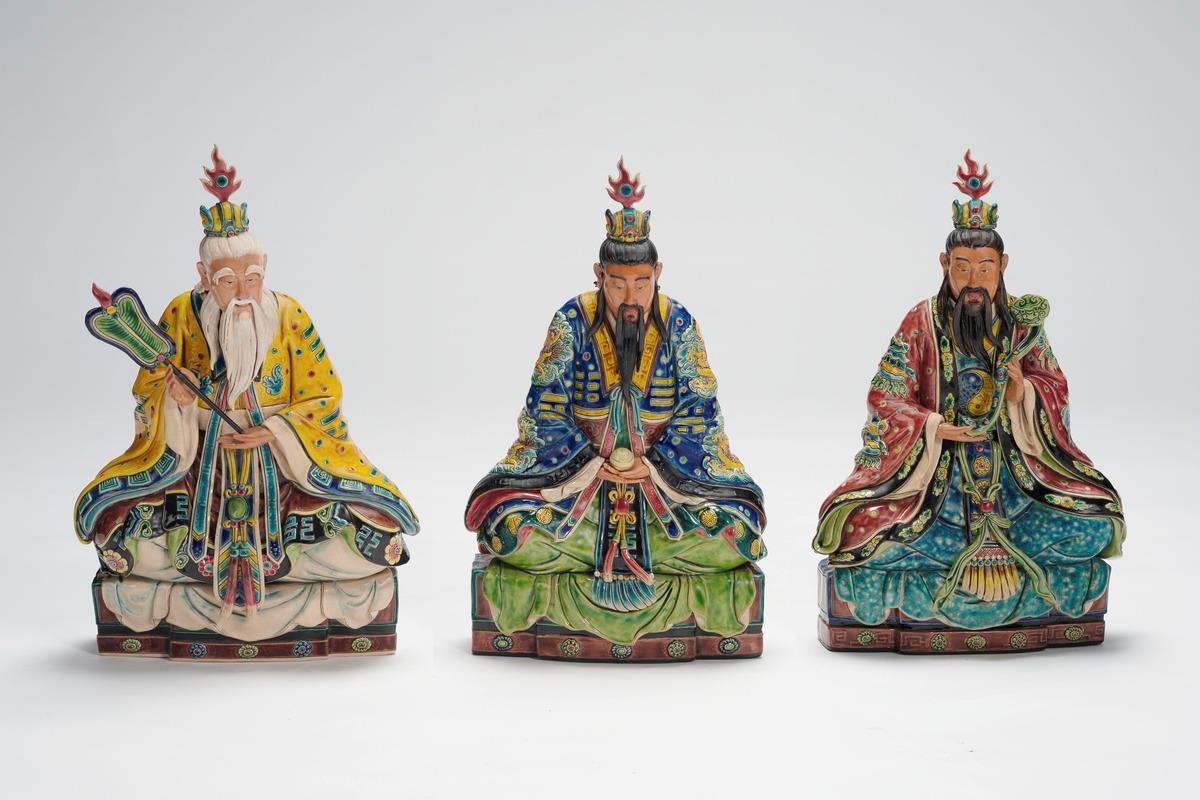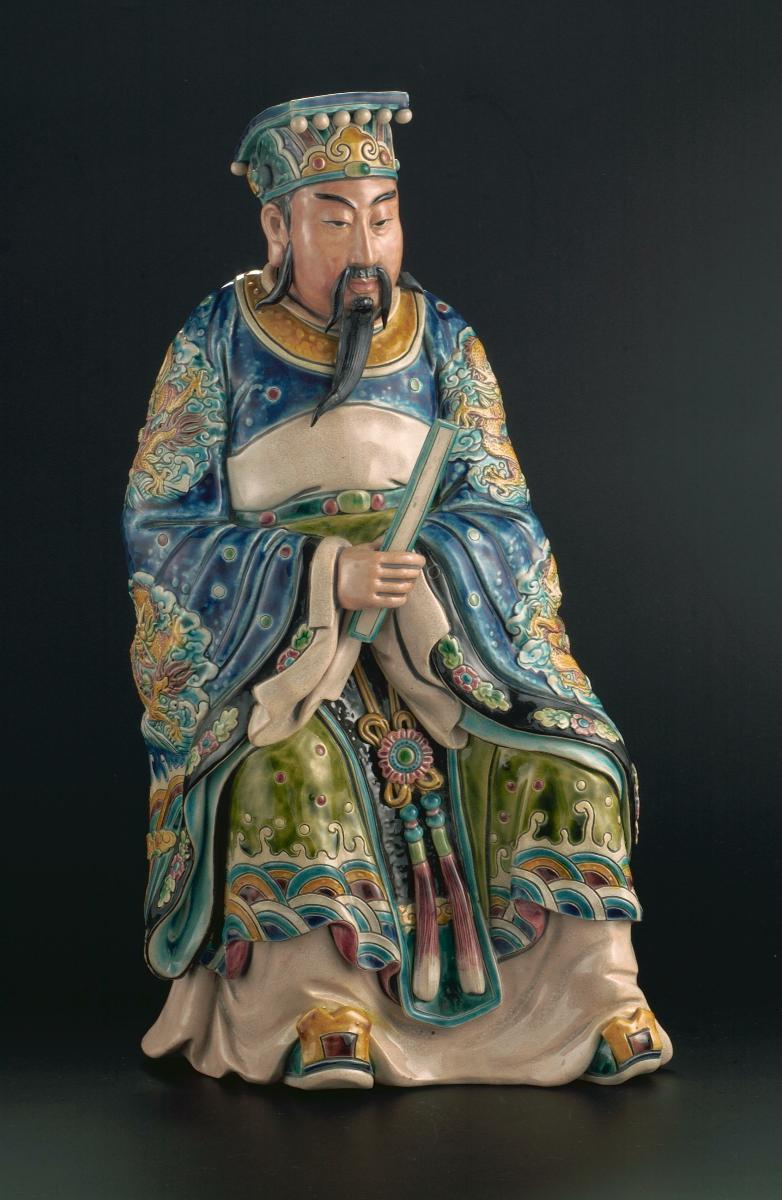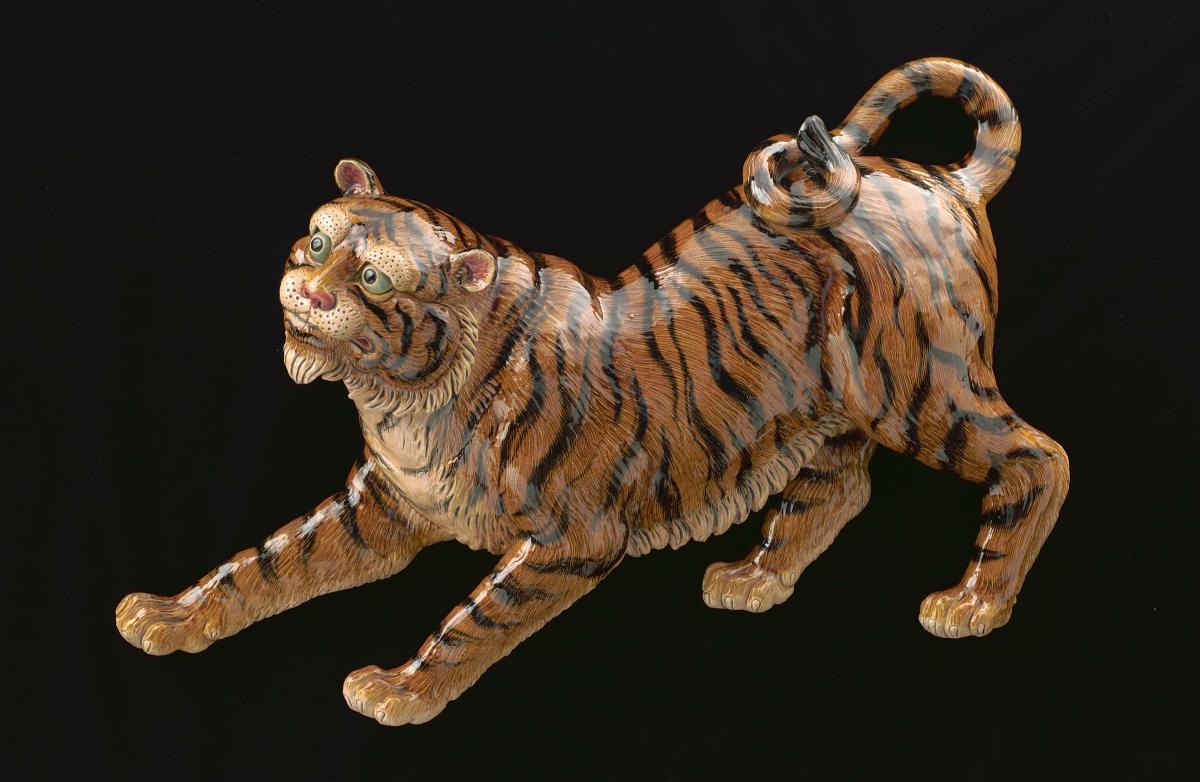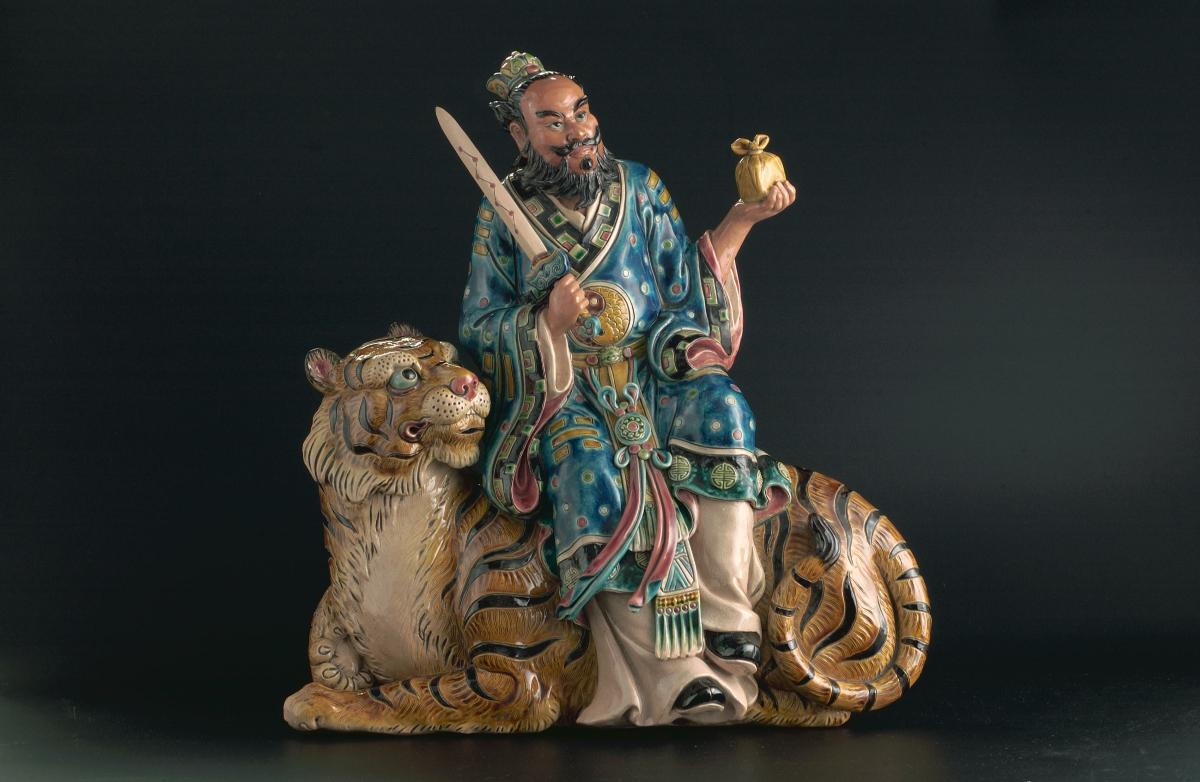This figure of Daode Tianzun, 道德天尊, or Laozi, made from jiaozhi ceramic, represents one of the Three Pure Ones (Sanqing). The deity is identified by a fan with a fly-whisk.At the apex of the Daoist pantheon are the Three Purities consisting of the Celestial Worthy of Primordial Beginnings (Yuanshi Tianzun, 元始天尊), the Celestial Worthy of Numinous Treasure (Lingbao Tianzun, 灵宝天尊) and the Celestial Worthy of the Way and its Power (Daode Tianzun, 道德天尊) with the last being the deified Laozi (老子). As pure emanations of the Dao, the Three Purities are in fact anthropomorphic figures illustrating the abstract concept of Dao. Invoked only by Daoist high priests during rituals, they are seldom approached directly by lay devotees.This type of ceramic is essentially enamelled, low-fired ceramic (minyao), originating from the Guangdong province in south China. It was commonly used in religious architecture or in wealthy patrons' homes. The forms created were usually figurines of folk, Daoist and Buddhist origins. Animals, flowers and foliage with auspicious meanings, too, were also included in this repertoire. The art of jiaozhi ceramic spread to Taiwan in the late Ming and early Qing dynasties.Mr Lin Kuang I, who made this jiaozhi piece, is the foremost Jiaozhi artist in Taiwan and in the world. The art of Jiaozhi ceramic is more vibrant in Taiwan than in China today. He trained under Lin-Tien-mu, who was in turn the disciple of Yeh Wang - the most influential figure in Taiwanese Jiaozhi. Mr Lin made breakthroughs in glaze technology and firing. He is most skilled in the making of human figurines and organic shapes.















